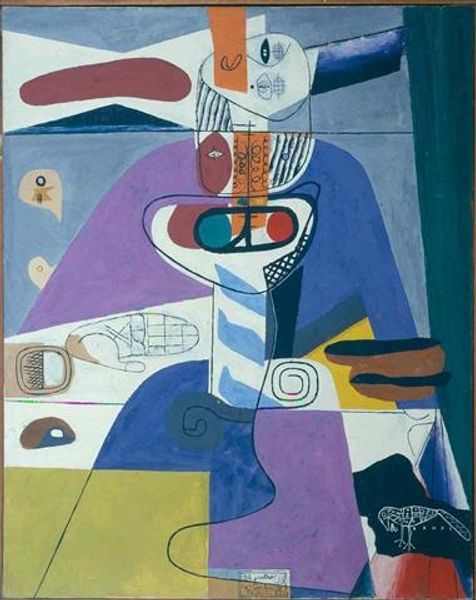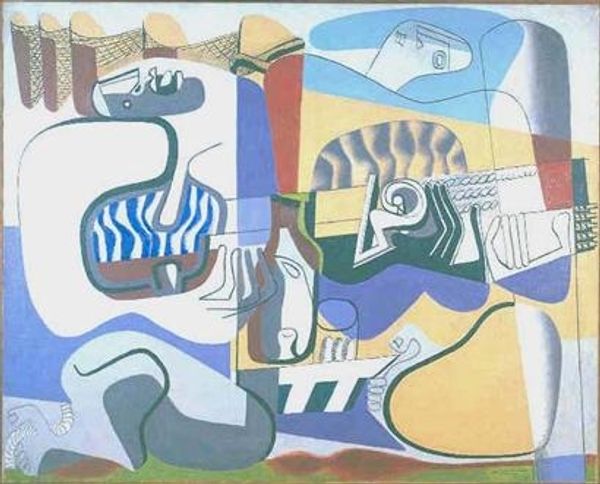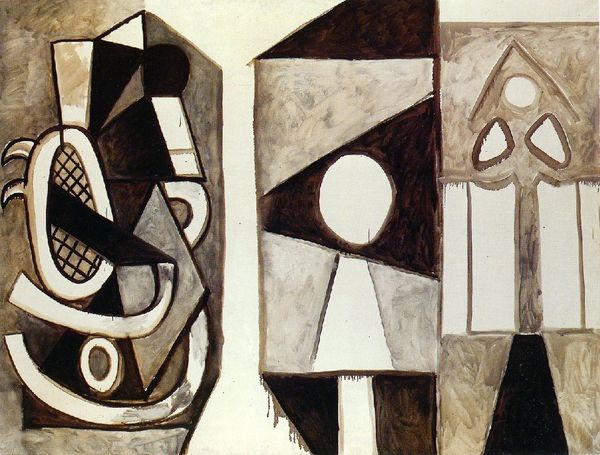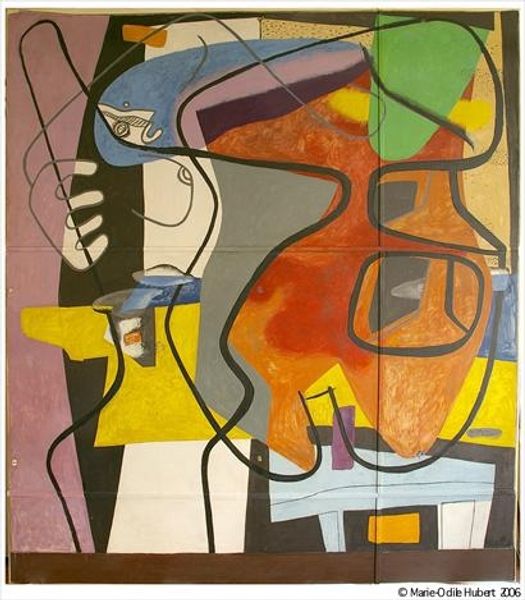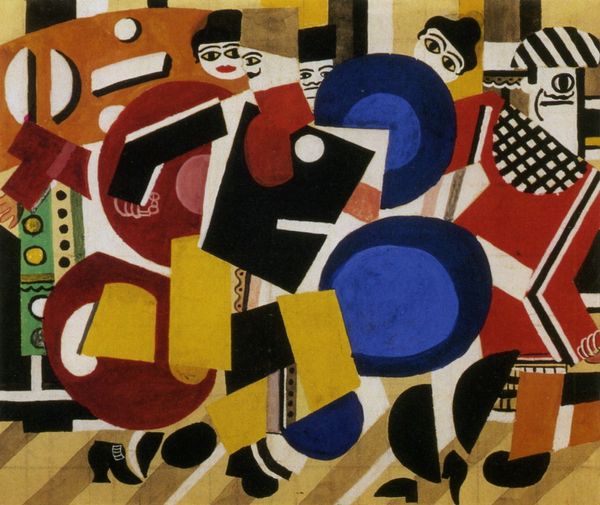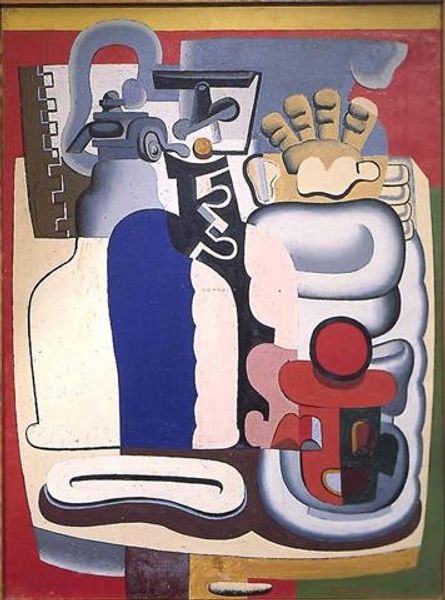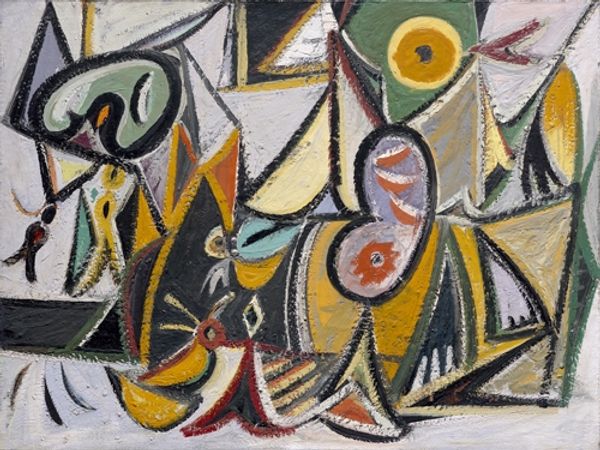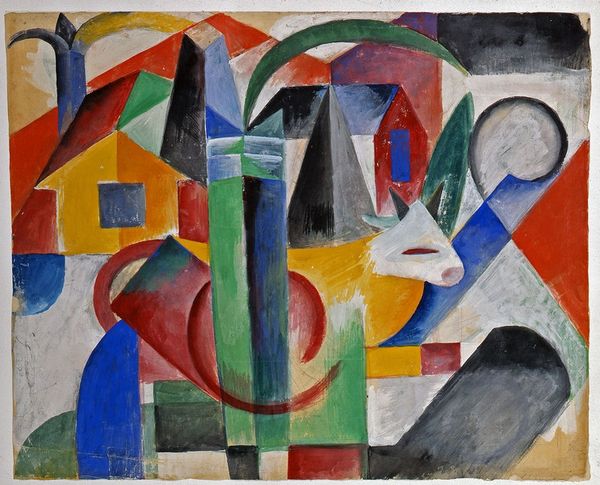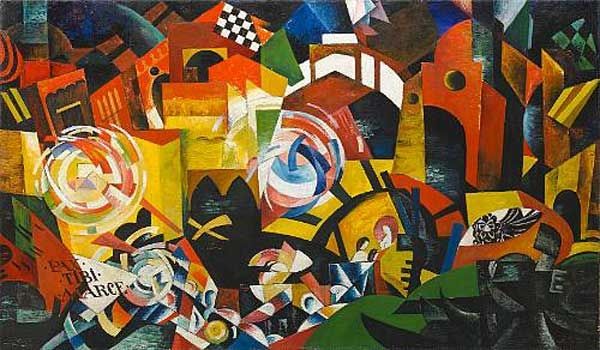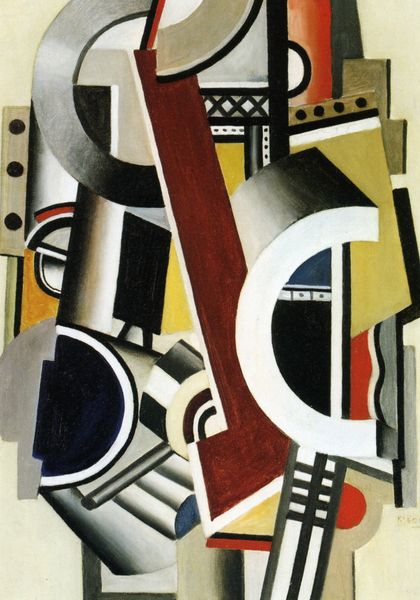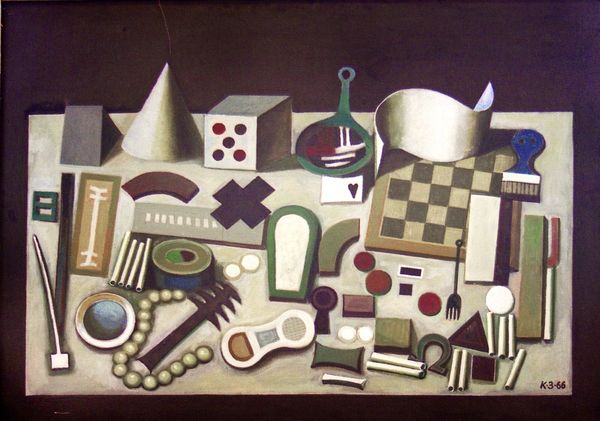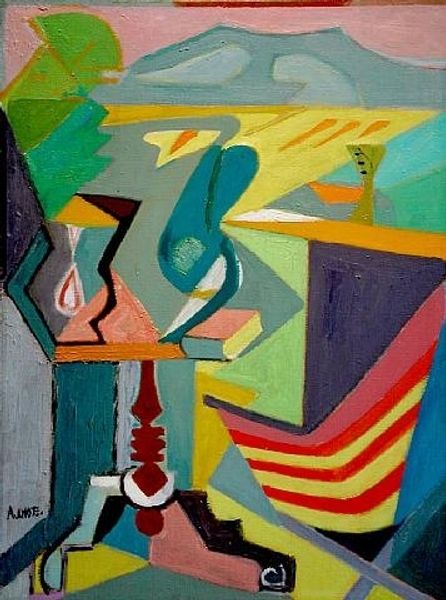
mixed-media, painting
#
cubism
#
mixed-media
#
painting
#
geometric
#
abstraction
#
modernism
Copyright: Le Corbusier,Fair Use
Curator: Welcome. We're looking at Le Corbusier's 1937 mixed-media painting, "Deux femmes fantasques," or "Two Whimsical Women." Editor: My first impression is a kind of unsettling calm. There’s this tension between the fractured forms and a somewhat soothing palette of blues, greens, and browns. Curator: Precisely. The interplay of geometric and biomorphic shapes invites contemplation. Note the layering of forms: how they create a flattened perspective that defies traditional representation. The colour palette supports the flattening, yet remains fairly restrained in tonality. Editor: What I find interesting is the combination of paint and what looks like collage elements. How does that materiality influence the artwork's meaning or its creation? It moves beyond painting, hinting at constructed realities. Curator: The materiality disrupts any fixed interpretation. By incorporating various media, Corbusier emphasizes the artwork's status as a constructed object rather than a mimetic reflection of reality. These fragmented representations and the layered collage reflect broader cultural anxieties, in post-war Europe, about shifting identities. Editor: I think about the laborious processes involved in cutting, layering, and combining disparate materials. It challenges our understanding of modern art's supposed detachment from the handcrafted object. The layering process becomes symbolic—a commentary on industrialization or on a society undergoing immense material transformations. Curator: Indeed, by decentering conventional perspective and form, the artist pushes the viewer to confront abstraction itself. The title, too, draws our attention: “Deux femmes fantasques”, whimsical women, alludes to the shifting representation of women, a popular topic in modern art. Editor: I'm struck by how Corbusier merged the industrial aesthetic with deeply humanistic themes by exploring how modern materials reshaped our world, challenging the boundary of the human-made and organic worlds. Curator: It invites us to view not only the painted imagery but also the material constituents that brought it to fruition. Editor: Exactly, by recognizing that duality in materials we confront the artist's reflection of ourselves, reshaped.
Comments
No comments
Be the first to comment and join the conversation on the ultimate creative platform.
